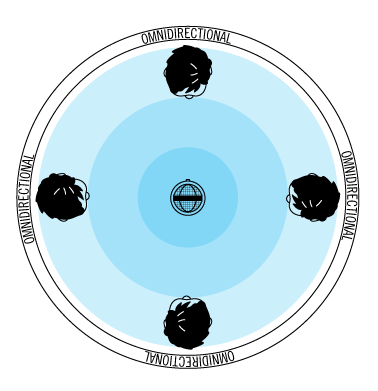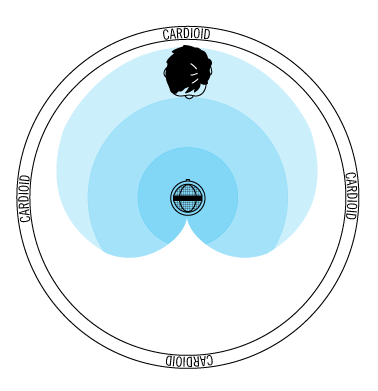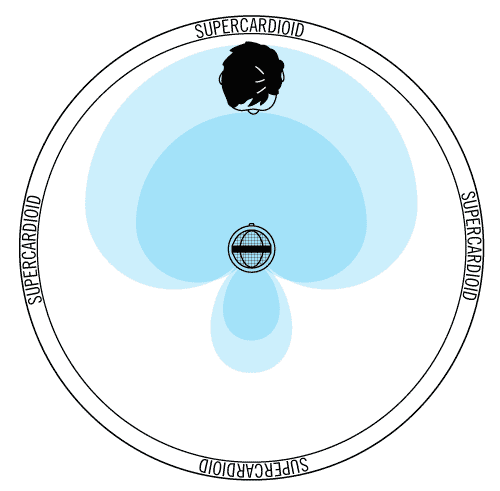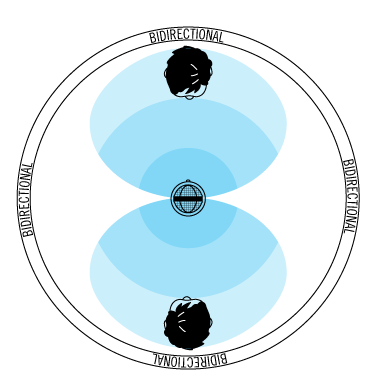Microphone Polar Patterns: What are they, and why do they matter?
Polar Patterns
The most important characteristic of any microphone is its directionality or “pickup pattern”. Any microphone exhibits its best frequency response when pointed directly at the sound source. The pickup pattern is not a physical component added to the microphone; it is by and large the result of how the capsule is constructed. There is no “ideal” pattern; the choice is often dictated by application.
When choosing a pattern, you should be aware of the phenomenon known as the “proximity effect”. Simply put, proximity effect is the change in frequency response as the microphone position is changed relative to the sound source. Depending on the pickup pattern, the low frequency response will increase, sometimes greatly, when positioned less than 12 inches away from the sound source. Understanding and knowing how to use the proximity effect can be a tremendous help in getting just sound you looking for. The following sections details the three most common pickup patterns.

Omnidirectional
Omnidirectional microphones pick up sound (generally) equally from all directions – in front of the mic, behind the mic, off to the sides, etc. Unlike with other directional patterns, omnidirectional microphones tend to have a smoother frequency response and no degradation of the sound as the vocalist moves “off-axis” from the front of the mic. Omnidirectional microphones are great for recording a number of people around a single microphone. Lavalier (lapel worn) microphones typically have an omnidirectional pickup pattern to ensure a uniform pickup of the performers voice, even if they move their head side to side.

Cardioid
Also referred to as unidirectional, the cardioid (“heart-shaped” – it shares its roots with the words cardio, cardiology, etc.) pattern is the most commonly used pickup pattern. The cardioid pattern is most sensitive to sounds directly in front of the mic, and rejects sounds coming from behind the microphone, preventing feedback from the onstage monitoring systems, plus the cardioid provides better isolation from other vocalists or instruments sharing the stage. The tradeoff when using a cardioid microphone is that they have a more pronounced drop in bass response and fidelity when moving away from the center axis of the microphone.

Supercardioid and Hypercardioid
The supercardioid design narrow the cardioid pickup field, delivering an even more directional microphone and with more rejection on the sides of the mic. The tradeoff is a diminishing of the microphone’s off-axis response. Additionally, the supercardioid pattern features a rear lobe, which is in contrast to the standard cardioid pattern. This lobe reduces the rejection of sound coming from directly behind the microphone. Supercardioid microphones are generally used on stage where greater side-to-side isolation is necessary. The hypercardioid pattern is another variation of the cardioid pattern. It has an even tighter front pickup pattern with a longer rear lobe.

Bidirectional
Figure-8, or bidirectional, microphones pick up sound directly in front and back of the microphone while rejecting the sound on the left and right sides. This style of microphone is comparable to having two identical microphones facing back-to-back to each other. This can be an ideal setting for capturing two performers singing a duet or a cross table interview. A bidirectional microphone can also create some interesting slap back echo effects by positioning the microphone between the sound source and a particular wall in the studio. The rear capsule will pick up the reflection of the sound off the wall, and by changing the distance of the microphone from the wall the delay time of the echo.
